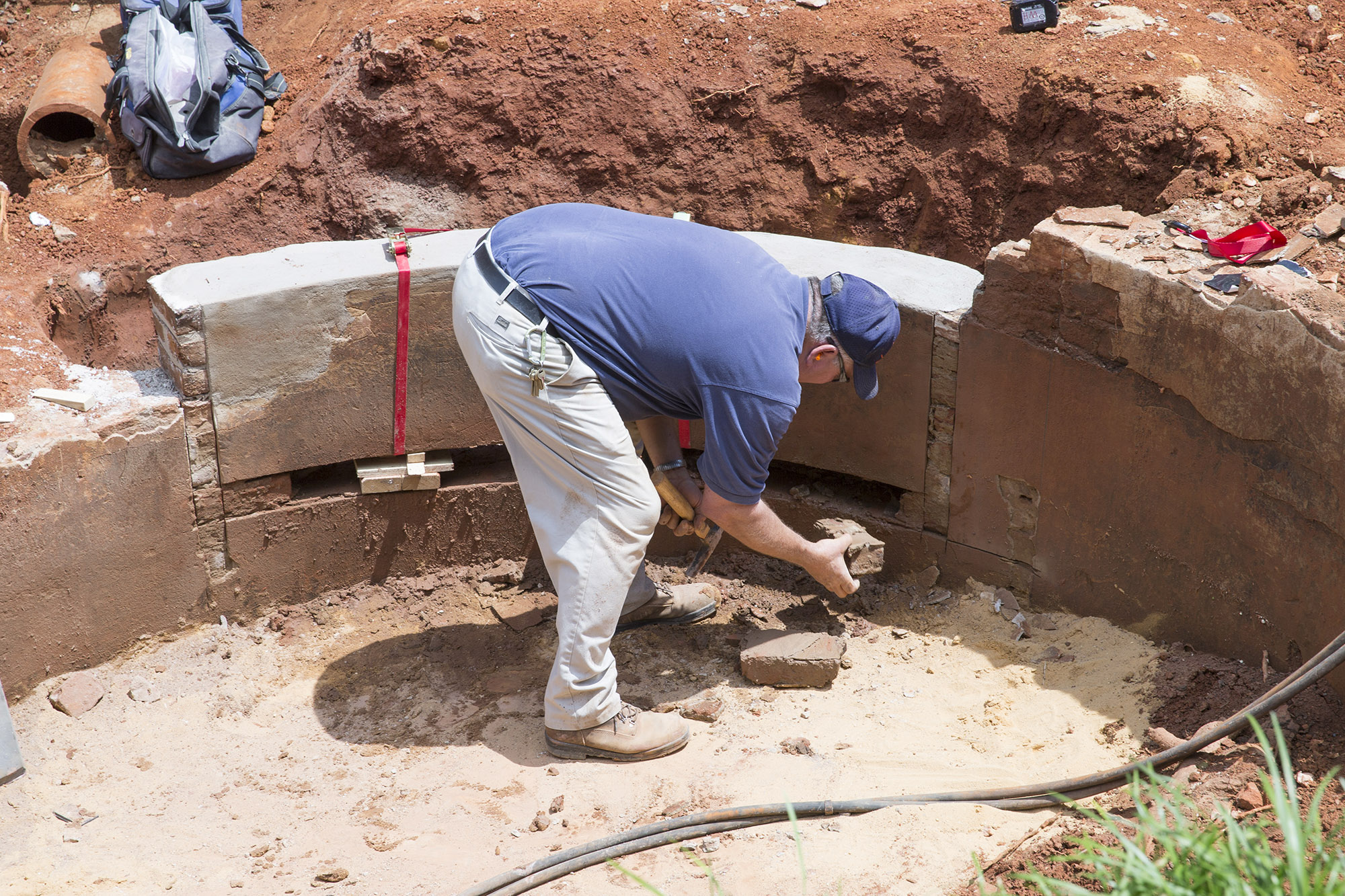The craftsmen who built the cistern alongside the University of Virginia’s Rotunda are long dead, but some of their names were preserved – etched into the cement that lines the 6,500-gallon water tank.
This spring, Rivanna Archaeological Services LLC carefully excavated the cistern, which dates to the 1850s, in preparation for the extensive renovation work at the University’s Rotunda. Its location in the east garden courtyard will eventually become the site of an underground chamber housing new mechanical systems for the Rotunda.
The names of some of the workers who built the underground cistern survived on its inside walls, which had been filled with 4½ tons of clay soil since the early 1890s. Now they will be above ground, as sections of the cistern walls have been removed and preserved.
Archaeologists uncovered the inscriptions “Charles Carter” and “[...]AND J W BRAND workmen of this cistern,” and “James W. Brand” scraped into opposite walls of the brick structure.
Stephen Thompson, a principal investigator for Rivanna Archaeological, believes James Walker Brand attended U.Va. from 1853 to 1855 before receiving a medical degree from the Medical College of Virginia in 1856. Chiles Brand, James W. Brand’s father, was paid for brickwork and plastering for three cisterns in 1851, Thompson said.
The cisterns, which collected rainwater, were a primary source of water for the early University and maps indicated that there may be a cistern buried underneath the western courtyard garden as well. While the large circular cistern functioned primarily as a water reserve to be tapped in the event of fire, a much smaller auxiliary or overflow tank attached to the main cistern provided water, via a valve and lead pipe, to the chemical laboratory located in the basement of the Rotunda Annex.
“I now believe that the cistern we have been excavating is one of the three constructed in 1851 and that Chiles Brand’s son, James Walker Brand, worked with or for his father as a young man,” Thompson said.
While a fair amount is known about the Brands, Thompson has found little on Carter, whom he thinks likely was a member of Brand’s work crew.
University masons carefully removed sections of the cistern wall, building foam-lined boxes around them, then lifting them out of the hole using a tractor with bucket loader on the front. “The masons wanted to move it by hand, but it was too heavy,” said Mark Kutney, an architectural conservator in the Office of the Architect for the University.
Once the Rotunda renovations are complete, the wall sections may be displayed in the Rotunda. They will be stored for the time being.
The cistern, which collected rainwater from the roof of the Rotunda and the south wing, was used until the University connected to a municipal water system. In 1886, the University and the city of Charlottesville jointly funded a more reliable water supply system that used the newly constructed Ragged Mountain dam and reservoir. The cistern was filled in before the 1895 Rotunda fire.
Some of the cistern’s top layers of brick were disturbed over the years as various utility pipes were buried in the courtyard. When the archaeologists got to the bottom of the structure – about 13 feet below ground level – they found some timbers which may have come from cistern’s the wooden roof and a carpenter’s ax head, with a hammerhead on one side and hatchet blade, with a nail-pulling slot, on the other.
“Maybe it was dropped while the roof was being dismantled and salvaged,” Thompson said.
Workmen will preserve some of the cistern bricks to use in historic repairs in the Academical Village.
Other planned work during the two-year Rotunda renovation project includes replacing the marble capitals, upgrading internal systems, repairing portico roofs and new landscaping. The project is expected to conclude in the summer of 2016.
Media Contact
Article Information
June 10, 2014
/content/archaeologists-salvage-rotunda-cistern-signatures

